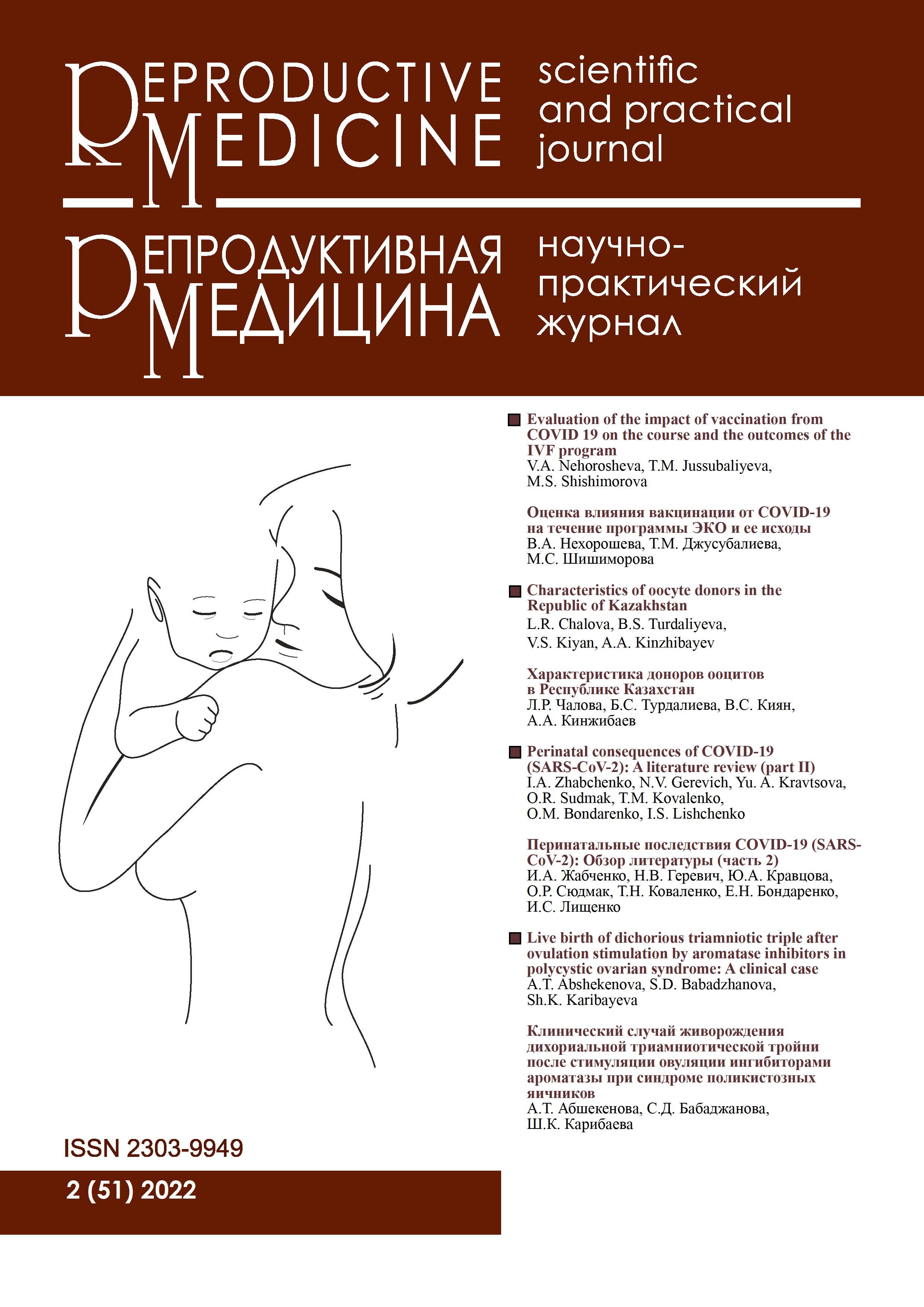Using a synthetic analogue of prostaglandin e1 (misoprostol) Per os for cervical maturation
DOI:
https://doi.org/10.37800/RM.2.2022.77-83Keywords:
Preparing the cervix for childbirth, Misoprostol administration according to the schemeAbstract
Relevance: The frequency of labor induction is steadily increasing, and in industrialized countries, about one in four pregnant women are induced labor.
The aim of the study - was to evaluate the effectiveness of a synthetic analog of prostaglandin E1 0.2 mg (misoprostol) for
maturation of the cervix when using per os and to analyze the frequency of operative labor as well as maternal and perinatal complications associated with the use of misoprostol.
Methods: The analysis of the results of preparation of the cervix for childbirth in 332 pregnant women with misoprostol
based on the protocol of diagnosis and treatment of the Ministry of Health of the Republic of Kazakhstan “Induction of labor” 2017 was carried out. The study period is September–December 2021.
Results: Against the background of the ongoing preparation of the birth canal, 93% (309) of pregnant women began regular labor activity. In 6.9% of cases (23), regular labor activity did not begin against the background of pre-induction, but a degree of maturity on the Bishop scale of 7 points or more was achieved. Of all 332 cases of preinduction, 83.7% (278) of pregnant women completed childbirth through the natural birth canal. Cesarean section surgery was performed urgently in 16.2% (54) of pregnant women, while in the latent phase of labor, cesarean section was performed in 21.4% (11) of women in labor, and in most cases in the active phase of labor 78.6% (43).
Conclusion: The authors suggest considering the possibility of preparing misoprostol in the form of solutions or suspensions for parenteral use, which will meet the requirements for dosage forms for parenteral use.
References
De Vaan M.D.T. et al. Mechanical methods for induction of labour // Cochrane Database Syst. Rev. 2019. Vol. 2019, No. 10. https://doi.org/10.1002/14651858.cd001233.pub3.
Радзинский В.Е. Акушерская агрессия. Москва: Status Praesens, 2017 [Radzinskii V.E. Akusherskaya agressiya. Moskva: Status Praesens, 2017]. https://akusher-lib.ru/books/akusherskaya-agressiya-v-2-0/.
Chodankar R., Sood A., Gupta J. An overview of the past, current and future trends for cervical ripening in induction of labour // Obstet. Gynaecol. 2017. Vol. 19, No. 3. P. 219 - 226. https://doi.org/10.1111/tog.12395.
Marconi A. Recent advances in the induction of labor [version 1; peer review: 2 approved] // F1000Research. Faculty of 1000 Ltd, 2019. Vol. 8. https://doi.org/10.12688/f1000research.17587.1
Swamy GK. Current methods of labor induction. Semin Perinatol. 2012 Oct; 36(5):348-52. https://doi.org/10.1053/j.semperi.2012.04.018. PMID: 23009967. https://doi.org/10.1053/j.semperi.2012.04.018
Grobman W.A. et al. Labor Induction versus Expectant Management in Low-Risk Nulliparous Women//N. Engl. J. Med. 2018. Vol. 379, No. 6. P. 513 - 523. https://doi.org/10.1056/nejmoa1800566.
Saccone G. et al. Induction of labor at full-term in pregnant women with uncomplicated singleton pregnancy: A systematic review and meta-analysis of randomized trials // Acta Obstetricia et Gynecologica Scandinavica. 2019. Vol. 98, No. 8. https://doi.org/10.1111/aogs.13561
Cоates D. et al. A systematic scoping review of clinical indications for induction of labour // PLoS One/ed. Mastrolia S.A. 2020. Vol. 15, No. 1. P. e0228196. https://doi.org/10.1371/journal.pone.0228196.
De Vivo V. et al. Early amniotomy after cervical ripening for induction of labor: a systematic review and meta analysis of randomized controlled trials // Am. J. Obstet. Gynecol. Elsevier Inc., 2020. Vol. 222, N 4. P. 320 - 329. https://doi.org/10.1016/j.ajog.2019.07.049.
Boulvain M. et al. Induction of labour at or near term for suspected fetal macrosomia // Cochrane Database Syst. Rev. 2016. Vol. 2016, No. 5. https://doi.org/10.1002/14651858.cd000938.pub2.
Downloads
Published
How to Cite
Issue
Section
License
The articles published in this Journal are licensed under the CC BY-NC-ND 4.0 (Creative Commons Attribution – Non-Commercial – No Derivatives 4.0 International) license, which provides for their non-commercial use only. Under this license, users have the right to copy and distribute the material in copyright but are not permitted to modify or use it for commercial purposes. Full details on the licensing are available at https://creativecommons.org/licenses/by-nc-nd/4.0/.




